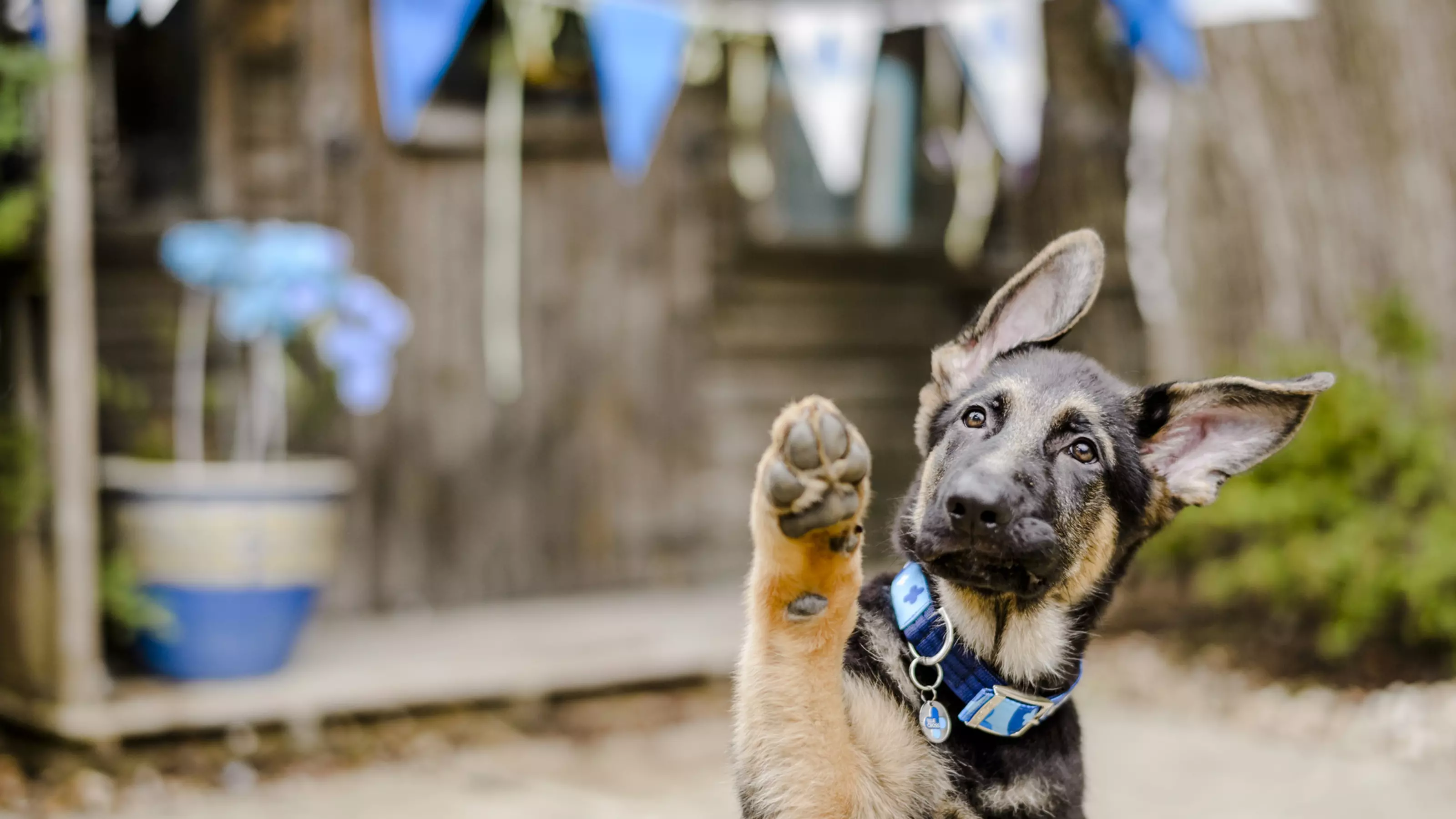
How to teach your dog to high five
If you and your dog enjoy training, you can teach them this fun high five trick.
Learning a new trick can be a fun way for your dog to stay mentally stimulated. It's also useful for building your bond.
If you have a dog who’s keen to learn, or even if they’re a bit on the reluctant side, teaching them to high five is nice and simple, so you’ll have them doing it in no time at all.
Note
For your dog to learn high five, they'll need to know a good sit cue.
Before you start
Training your dog should be fun and stress-free for both of you. Keep training sessions to no longer than a couple of minutes with plenty of breaks for your dog in between. Little and often is much more enjoyable.
Your dog is also more likely to learn something new when there are no other distractions. Training them is best done indoors in a quiet area they feel comfortable in, with plenty of space.
Pay attention to your dog's body language for signs of stress, boredom or frustration. If they're not interested in training, stop the session and try again another time.
What you'll need
To make learning as enjoyable as possible for your dog, use their favourite tasty treat. Some dogs are happy to be rewarded with their normal kibble, while others may need something extra tasty (such as small pieces of chicken, sausage or cheese).
If you and your dog are familiar with clicker training, you can also use a clicker for this.
Teaching your dog to high five
- Hold a treat for your dog in a closed fist. Allow them to sniff and lick at your hand. This will eventually lead to them pawing at your hand.
- As soon as they paw at your hand, say "yes" or click to mark the action, and give them a treat straight afterwards
- Repeat this until they are reliably pawing at your hand. Make sure you mark the action and reward them each time.
- You can then add the new cue "high five" at the moment they paw your hand. This will pair the action with this cue word.
Tip
If your dog is unsure on what to do, go back to the previous step. Be patient and wait until they've mastered what you're asking before moving on.
Page details
Reviewed
• 7 May 2024
Next review
• 7 May 2027






